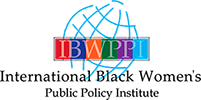Preparing at Home: Create a Plan for You and Your Family
As of March 19 th , the total cases in the United States spread to all 50 states and has totalled to 9,415 cases and 150 deaths. It’s important that we begin to plan and make decisions now that will protect us and our families during the COVID-19 outbreak. Get free live updates from the New York Times at this link, or sign up for a free newsletter from the Washington Post here.
According to the CDC, creating a household plan can help protect your health and the health of those you care about in the event of an outbreak of COVID-19 in your community.
Your Household Plan
- Consider members of the household that may be at greater risk such as older adults and people with severe chronic illnesses.
- Ask your neighbors what their plan includes.
- Create a list of local organizations you and your household can contact in case you need access to information, healthcare services, support, and resources.
- Create an emergency contact list including family, friends, neighbors, carpool drivers, healthcare providers, teachers, employers, the local public health department, and other community resources.
- Choose a room in your house that can be used to separate sick household members from others.
- Take breaks from watching, reading, or listening to news stories, including social media. Hearing about the pandemic repeatedly can be upsetting.
- Take care of your body. Take deep breaths, stretch, or meditate. Try to eat healthy, well-balanced meals, exercise regularly, get plenty of sleep, drink plenty of water and avoid alcohol and drugs.
- Make time to unwind. Try to do some other activities you enjoy.
- Connect with others. Talk with people you trust about your concerns and how you are feeling.
If you, or someone you care about, are feeling overwhelmed with emotions like sadness, depression, or anxiety, or feel like you want to harm yourself or others see the list of phone numbers:
- 911
- Substance Abuse and Mental Health Services Administration’s (SAMHSA’s) Disaster Distress Helpline: 1-800-985-5990
- text TalkWithUs to 6674
- TTY 1-800-846-8517
Basic Guidance on How to Avoid the Spread of COVID-19
The Centers for Disease Control and Prevention have released some guidance on precautions that people can take to prevent the spread of the virus. Safety precautions include disinfecting your home and workspaces, staying home if you are sick, and washing your hands frequently with soap and water for at least 20 seconds at a time.
Know How it Spreads
- There is currently no vaccine to prevent coronavirus disease 2019 (COVID-19).
- The best way to prevent illness is to avoid being exposed to this virus.
- The virus is thought to spread mainly from person to person.
- Between people who are in close contact with one another (within about 6 feet).
- Respiratory droplets are produced when an infected person coughs or sneezes.
- These droplets can land in the mouths or noses of people who are nearby or possibly be inhaled into the lungs.
Take Preventative Steps to Protect Others
- Put distance between yourself and other people if COVID-19 is spreading in your community. This is especially important for people who are at higher risk of getting very sick.
- Cover your mouth and nose with a tissue when you cough or sneeze or use the inside of your elbow.
- Throw used tissues in the trash.
- Immediately wash your hands with soap and water for at least 20 seconds. If soap and water are not readily available, clean your hands with a hand sanitiser that contains at least 60% alcohol.
- Avoid close contact with people who are sick
- Cover coughs and sneezes
Around the Globe
Tale of Two Countries (and COVID-19)
South Korea reported their first case on January 20 th , only one day before the first US case was reported. But by practicing social distancing, transparency of information, and coordination of resources, South Korea has been able to confirm 8,400 cases by testing 295,000 people in the time since their initial case. The United States is nowhere near that number of persons tested because of severe shortages of testing kits. Gathering information across states has proved difficult as the Centers for Disease Control reports specimens tested, not people, and some states are reporting only positive tests, not negative ones. While the federal government has committed to increasing states’ capacity to test citizens, be vigilant about remaining socially distant, constantly washing your hands, and staying home if you are sick.
Click here to see how the COVID-19 pandemic is advancing worldwide.
The US-Canada Border Closed to Non-essential Travel
The mutual decision will allow trade to continue but restricts flights and border crossings for things like leisure travel.
Global Resources and News
Miami Herald: Coronavirus: Here are some of the measures taken by Latin American, Caribbean nations ”
United Nations: Coronavirus disease (COVID-19)
World Health Organization Africa: Health topics Coronavirus (COVID-19)
Pan-American Health Organization: Coronavirus Disease (COVID-19)
BBC: WHO head tells Africa to ‘wake up’ to coronavirus threat
US News: Africa Coronavirus Cases to Rise as Some Escape Detection: Africa CDC Head
Free Resources
Are You at Home with the Kids?
ABCmouse.com is offering lessons in different subjects like math, science and art for free thanks to UNICEF. Follow this link and type in the code “AOFLUNICEF”
Scholastic Learn at Home is also offering their lessons for free. You can choose activities within from grade levels between PreK and 6+. These include read-along e-books and educational videos under their “Watch and learn Library.”
Closing The Connectivity Gap During COVID-19
Charter/Spectrum is offering free access to broadband and Wi-Fi for 60 days for K-12 and college student households in addition to opening up its Wi-Fi hotspots for public use.
AT &T has signed on with the FCC Chairman Pai’s “ Keep America Connected Pledge ” to not terminate service for any wireless, home phone, broadband residential or small business customer due to inability to pay as a result of the COVID-19 pandemic. They are also waiving late fees and opening up public hotspots.
Verizon also signed on to the FCC Chairman’s pledge and will be following a similar protocol and waiving late fees for customers.
Comcast is offering two months of its Internet Essentials plan for free during this time in addition to increased downstream and upstream speeds.
T-Mobile is offering unlimited data for the next 60 days, additional hotspot data, and is working with Lifeline partners to provide extra free LTE data and increasing data allowance for free to schools and students using their EMPOWER ED digital learning program.
Google has announced a number of online and offline tools to help those impacted by school and work closures .
You can follow up with each of these providers to find out your eligibility for any of these services.












